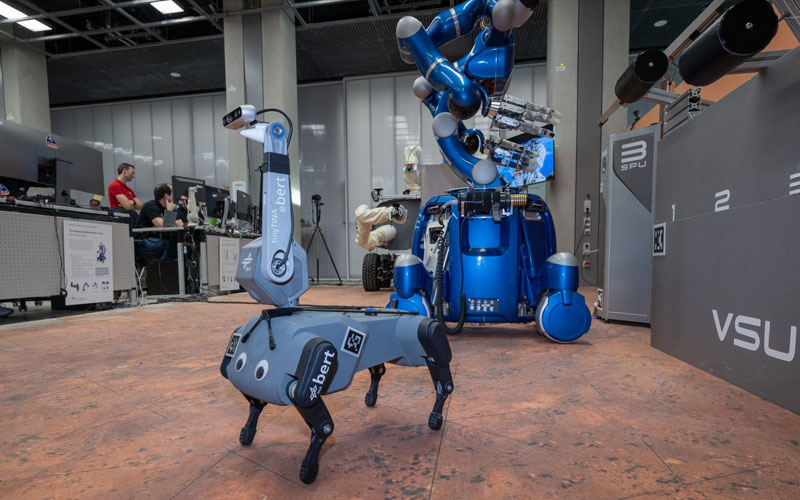
ESA project astronaut Marcus Wandt successfully completed a series of tests for the Surface Avatar project that included controlling Bert, a four-legged robot developed by DLR.
The Surface Avatar project was launched in 2020 and is being run by the German space agency DLR in partnership with ESA. The project aims to develop technology that will allow astronauts to control multiple robots independently and at once with precision or have them act semi or fully autonomously. The hope is that when humans once again explore the surface of the Moon and begin exploring Mars, these systems will be utilized to aid in those expeditions.
The series of experiments conducted by Marcus Wandt was designed to test how time delays affect the control of robots during space missions. During testing, Wandt was stationed aboard the International Space Station’s Columbus module. The robots he was controlling were in the Mars Laboratory at DLR’s Oberpfaffenhofen facilities. The series of tests saw Wandt take control of three different robots. The team began with Bert.
Unveiled in 2017, Bert is a four-legged robotic platform for researching biological locomotion. While the original version of the robot had a mass of around three kilograms, there have been several variants since its introduction.
According to DLR, Bert is the first robot with leg-based locomotion to be controlled by astronauts from space. The unique form of robotic locomotion is ideal for rough terrains and would allow robots like Bert to explore targets that are too dangerous or inaccessible for human explorers, such as small caves. After taking control of Bert for a time, Wandt then allowed the robot to explore autonomously while he took control of DLR’s humanoid service robot on wheels called Rollin’ Justin and ESA’s Interact Rover.
While controlling Rollin’ Justin and the Interact Rover, Wandt was able to have the humanoid robot hold a pipe in position while the rover installed it. The process was a validation of cooperative systems that are a vital element of the Surface Avatar project.

“Future stations on the Moon and Mars, including astronaut habitats, will be built and maintained by robots operating under the guidance of astronauts,” explained Alin Albu-Schäffer, director of the DLR Institute of Robotics and Mechatronics. “Our latest control and AI algorithms enable a single astronaut to command an entire team of different robots. Our DLR-ESA team is a world leader when it comes to this technology.”
The multi-robot experiment lasted for two and a half hours and was completed successfully.




